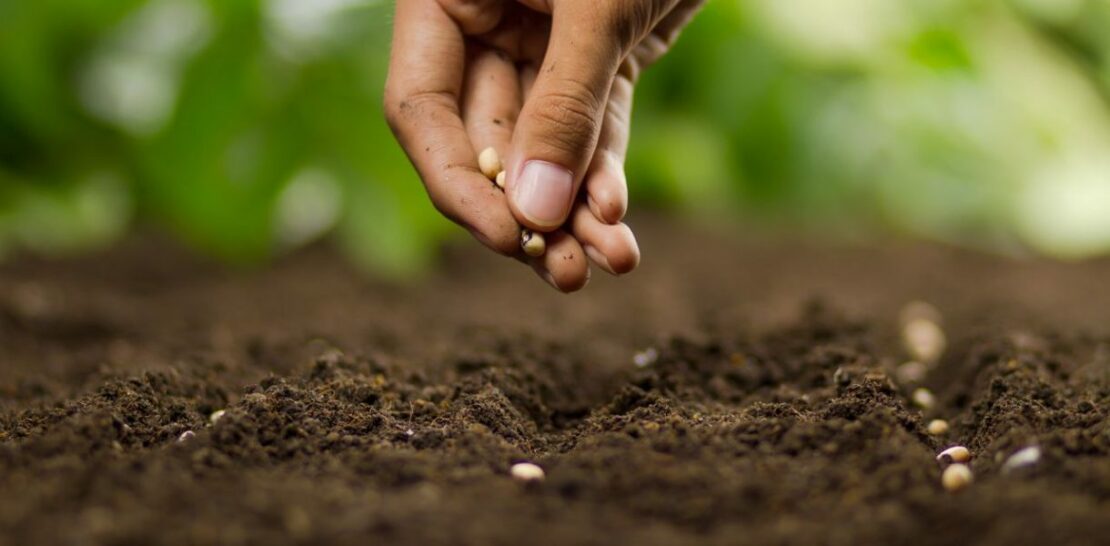As winter slowly fades away and spring approaches, it is time to begin planning and preparing your garden for the bountiful harvest that awaits.
February is an ideal month to start sowing and planting a variety of vegetables that thrive in the cool, crisp air of early spring.
In this comprehensive guide, we will delve into the world of gardening and provide you with all the necessary information to successfully grow seven delectable vegetables in your garden this February.
1. The Resilient and Nutritious Broad Beans
A great starting point for February planting is the highly adaptable broad bean, a vegetable that not only provides an abundance of health benefits but also adds a delightful flavor to your home-cooked meals.
- Planting conditions: Broad beans are a hardy plant which can withstand frost and cool temperatures. They require well-draining soil with a pH level between 6.0 and 6.5 and prefer a sunny location in your garden.
- Sowing techniques: Sow broad beans directly into the soil with a spacing of about 6 inches apart. Plant the seeds approximately 2 inches deep, and water them gently after planting to ensure they receive adequate moisture.
- Harvesting tips: Broad beans are ready to harvest when the pods have reached a length of around 3-4 inches. Gently pick the pods from the plant, making sure not to damage the stem or neighboring pods.
- Health benefits: These nutritious legumes are an excellent source of protein, dietary fiber, vitamins, and minerals. They are known to help improve heart health, maintain blood sugar levels, and support a healthy digestive system.
2. The Versatile and Flavorful Brussels Sprouts
For those who crave the savory taste of Brussels sprouts, February is the perfect time to plant these delightful orbs of flavor in your garden.
Preparing the soil: Brussels sprouts flourish in well-draining, fertile soil with a pH level between 6.0 and 6.5. It is essential to prepare the soil by incorporating organic matter, such as compost or well-rotted manure, to provide the necessary nutrients for healthy growth.
Planting instructions: Sow the seeds indoors in seed trays or small pots filled with seed compost. Maintain a consistent temperature of 45-50°F, and keep the soil moist but not waterlogged. Once the seedlings develop two sets of leaves, transplant them to your garden, spacing them 18-24 inches apart.
Harvesting and culinary uses: Harvest Brussels sprouts once they have reached a diameter of around 1-2 inches. The sprouts can be steamed, boiled, roasted, or even shredded and eaten raw in salads. Their versatility allows for numerous delightful dishes to be created.
3. The Delicate and Tasty Cauliflower
Another exceptional vegetable to plant in February is the cauliflower, known for its delicate flavor and wide range of culinary applications.
- Choosing the right variety: There are numerous cauliflower varieties available, ranging from traditional white to vibrant shades of purple, orange, and green. Consider factors such as growing time, climate adaptability, and resistance to pests and diseases when selecting your seeds.
- Planting guidelines: Start cauliflower seeds indoors using seed trays or small pots filled with seed compost. Maintain a temperature of 60-65°F and ensure adequate moisture levels. Once the seedlings are 4-6 weeks old and have developed at least two sets of leaves, transplant them outdoors, spacing them 18-24 inches apart.
- Harvesting and cooking tips: Harvest cauliflower heads when they have reached their desired size and are still firm to the touch. Cauliflower can be enjoyed raw, steamed, roasted, mashed, or even transformed into a delicious, low-carb alternative to rice.
4. The Nutrient-Rich and Satisfying Kale
Kale, a highly nutritious leafy green, is an excellent vegetable to plant in February and can be enjoyed in various dishes throughout the spring season.
Planting requirements: Kale thrives in well-draining, fertile soil with a pH level between 6.0 and 7.0. Select a locationin your garden that receives full sun to partial shade for optimal growth.
Sowing and transplanting: Begin by sowing kale seeds indoors in seed trays or small pots. Maintain a temperature of 65-75°F and keep the soil consistently moist. Once the seedlings have reached a height of 2-3 inches and developed a minimum of two sets of true leaves, transplant them outdoors, spacing them 12-18 inches apart.
Harvesting and meal ideas: Harvest kale leaves when they are still young and tender, as they will be the most flavorful at this stage. To harvest, simply cut the leaves from the stem, taking care not to damage the plant’s growing tip. Kale can be enjoyed in salads, sautéed, added to smoothies, or even baked into crispy chips for a healthy snack.
5. The Crunchy and Refreshing Radishes
Radishes are a fantastic addition to any February garden, providing a crisp, refreshing crunch to a variety of dishes.
Soil and location preferences: Radishes grow best in loose, well-draining soil with a pH level of 6.0 to 7.0. Choose a location in your garden that receives full sun to ensure optimal growth.
Sowing and thinning: Sow radish seeds directly into the soil, placing them approximately 1 inch apart and 1/2 inch deep. Once the seedlings have emerged, thin them to a spacing of 2-3 inches to allow room for the root to develop.
Harvesting and serving suggestions: Radishes are typically ready to harvest within 3-4 weeks, depending on the variety. Gently pull the radishes from the soil when the roots are approximately 1 inch in diameter. These crunchy vegetables can be enjoyed raw, sliced for salads, or even pickled for a tangy treat.
6. The Prolific and Tender Peas
For a bountiful harvest of tender, sweet peas, February is the perfect time to start planting in your garden.
- Soil and site selection: Peas need well-draining, fertile soil with a pH level between 6.0 and 7.0. Plant them in a sunny location in your garden, and consider providing a trellis or support system for the vines to climb.
- Planting tips: Sow pea seeds directly into the soil, spacing them 1-2 inches apart and 1 inch deep. For a continuous harvest, consider sowing seeds every 2-3 weeks throughout the spring season.
- Harvesting and enjoying: Harvest peas when the pods are plump and full, typically within 60-70 days of planting. Gently remove the pods from the vine and enjoy them fresh, steamed, or added to a variety of dishes such as stir-fries and pasta.
7. The Flavorful and Colorful Beetroot
Add a splash of color and earthy flavor to your February garden by planting beetroot, a versatile and nutritious vegetable.
Soil and location essentials: Beetroot grows best in loose, well-draining soil with a pH level between 6.0 and 7.0. Select a location in your garden that receives full sun for optimal growth.
Sowing and thinning: Sow beetroot seeds directly into the soil, spacing them 1-2 inches apart and 1/2 inch deep. Once the seedlings have emerged, thin them to a spacing of 3-4 inches to allow adequate room for the root to develop.
Harvesting and culinary uses: Harvest beetroot when the roots have reached a diameter of 1-3 inches, depending on the desired size. The leaves can also be harvested when young and tender for a delicious addition to salads or sautéed dishes. Beetroot can be enjoyed roasted, boiled, or even juiced for a vibrant and nutritious beverage.
In conclusion, February is a fantastic month to kickstart your garden and begin planting a variety of nutritious, flavorful vegetables. With careful planning, proper soil preparation, and diligent care, you can look forward to a bountiful harvest of broad beans, Brussels sprouts, cauliflower, kale, radishes, peas, and beetroot to enjoy throughout the spring season. Embrace the crisp air and warming sunlight as you sow the seeds fora successful and rewarding gardening experience. Not only will these seven marvelous vegetables provide you with delicious, homegrown produce for your meals, but they will also bring color, life, and joy to your garden as they grow and flourish throughout the season. So, gather your seeds, prepare your soil, and get ready to embark on a delightful journey of planting and nurturing these wonderful vegetables this February. Happy gardening!




